adiffrentcity
Bent Rodder
So, am I on the right track thinking that using this http://shoals.craigslist.org/tls/4452089026.html with a stick welder as a power source, and gas of course, I could tig?
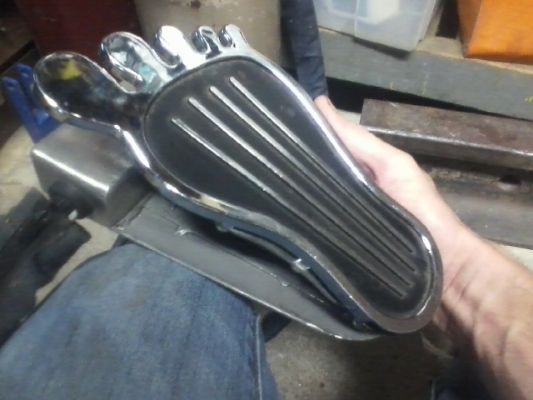
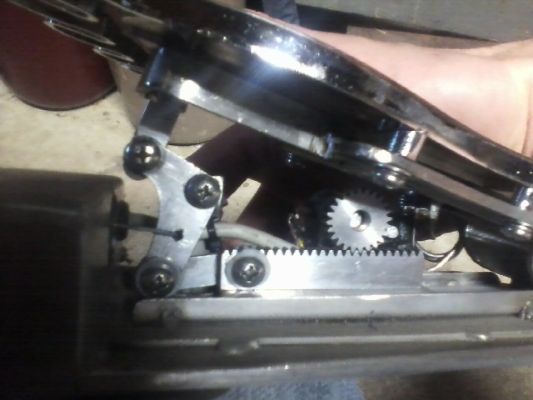
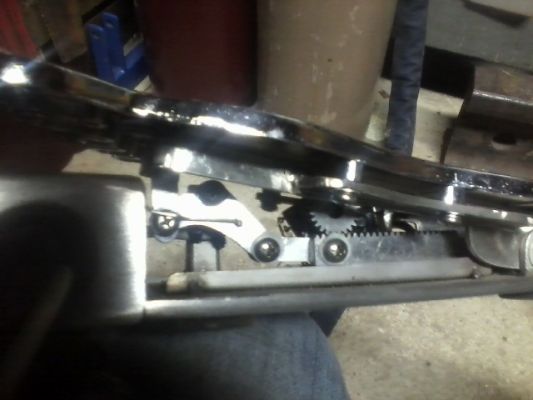
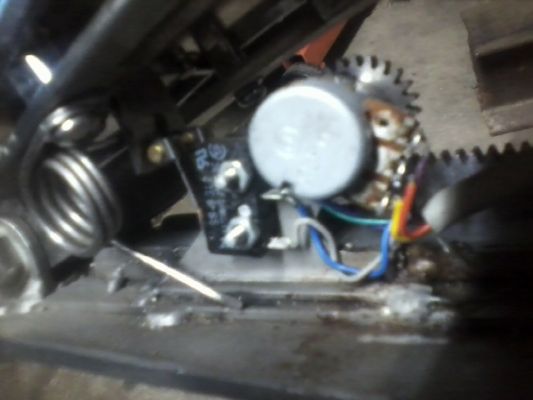
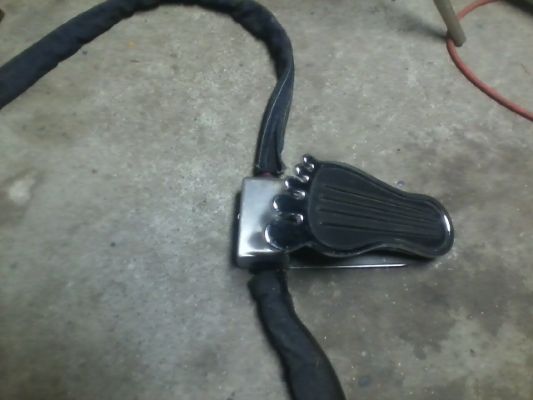
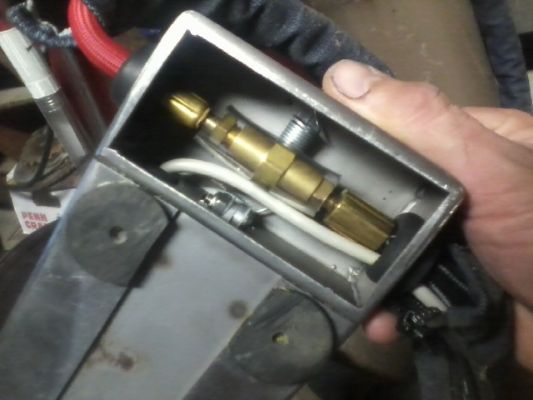
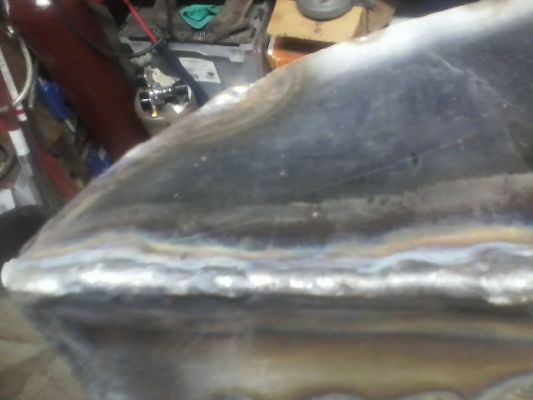
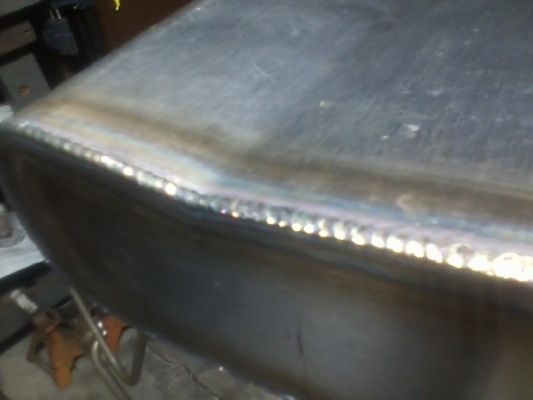
The "Hang 10 " pedal,is gorgeous, the spur/rack gear ,ingenious. Wowzers.I did make my own pedal.
It's a bit overkill in design, but I wanted a few features that other pedals didn't offer.




So now, I have all of my lines running into the front casing of the pedal and the torch whip out of the pedal, with the ability to add a plug on the pedal for the trigger.

The welder that I have doesn't show amps on the machine, when a pedal is plugged into it, so I incorporated a microswitch on a roller to connect it to the machine, followed immediately by another microswitch that actuates the torch, followed by the potentiometer that moves the amps up and down.

What the amp readout on the machine gives you, when the pedal is plugged in without any auxilary switch (like mine), is the active amp output, so when you are not on the pedal and its plugged in, it will display the lowest amp setting.
So, having a pedal that "plugs itself in" when you touch the pedal, before it engages the arc switch and begins moving up in amps, gives you the ability to glance at the machine and see the maximum set amps. The moment you touch the pedal, it displays the active amp output.
One way around this is to simply select the stick mode on the toggle switch on the machine to set your max amps with the dial, then flip it to tig mode. This way, it doesn't engage the gas and HF arc as you try to set it. My pedal bridges 6-7 pins when you touch the pedal, so when you are off of it, it doesn't detect the pedal and shows you the max amp setting.
The machine comes with a pinout for the pedal in the operator's manual and they have a really good support forum. There are seven pins, but you only need three plus a jumper from 6-7 if you don't want it switched like I made mine.
The weld quality coming from a tig has just as much to do with technique as it does its settings.
I tried welding an outside corner joint on .034" stainless sheet to make a tank and botched the first one. I found a number of problems with my attempt, based on what I researched. My speed was ok, but I was moving the filler rod too far away from the torch head, when I wasn't dipping it, allowing the rod end to oxidize and contaminate the weld. It still welded sound, it was functional but looked ugly;

So I started over and made some minor adjustments to my technique, increased the torch gas nozzle size, reduced tungsten stickout length, increased gas flow and those few things ended up making a world of difference on the appearance, consistancy and quality of the weld;

Every material and the type of weld joint requires some research, but it is well worth the effort in practice. If it produces lousy welds, there is usually something to be done, usually minor changes made to something to get the best results and correct the deficiency.
I've found that running practice beads on a sheet of aluminum, with or without weld rod is a great way to get in good control practice with pedal pulse/ puddle bead width control, speed consistency, keeping in front of the heat and line control. I've probably run through a tank of gas just practicing on junk metal that I cleaned up a little and it made a lot of difference.
If I'm unsure about a material or joint type, I'll mock one up in scrap and try different things, research different techniques and practice them on the scrap until I am satisfied with the results on the scrap.
Tig welders love clean joints. no grinding/ cutoff flash, undercoat on the back side, etc. super clean welds come from tight fit up/ zero gap and good cleaning.
Thanks, Tim.
I had more time in that pedal than I care to admit. It was a bit of an engineering nightmare. Adjusting the spur on the rack so it didn't bottom out, but had minimal lash, adjusting the tangs on the roller microswitches to engage sequentially. The arm on top of the L linkage has a slotted hole to allow the pedal to come down before engaging the rack/spur, so it connects to the machine/ switches off max display and goes to low end display and engages the 2nd micro roller switch to start the arc on the very bottom of the amp range.
Because the torsion spring that lifts the pedal would not keep the rack/spur position, as you start to lift up on the pedal to lower amps as you pulse, I had to put a second spring on the L linkage to keep tension between the pedal and the L link, so when you lift up on the pedal, it didn't shut the arc switch off at the low end, prematurely.
I barely kept myself from pitching the idea out the window and caving to ebay.
The torch trigger is good for awkward tac weld positions, but because it gives max amps all the time, you can't feather back out of it and the weld puddle craters, because it cools before the arc lowers enough to relieve it. Its like throwing a rock into a pool of water and watching it freeze before the water calms. The pedal is critical.
Thanks. Remind's me to fix my bench grinder.Most definitely. My welds looked like **** for the first few days.
I learned quick that clean prep and tight fit up as well as proper gas shielding is half the battle. The other half is not touching that tungsten tip to the work, but getting it as close and as straight on as you can.
I spent more time cleaning metal off of the tungsten rod tips, resharpening them on the bench grinder, than I did welding for the first few days.
That reminds me, get a small bench grinder and put a diamond wheel of some kind on it to sharpen your tungsten tips. The tungsten will eat a regular grinder wheel. Don't use it on anything else, or you can contaminate the tip. If you touch the tip while its arc is on, it will take in some of the work metal and the arc will try to go around the forgein work metal. This changes the heat dynamic so that it spreads all over the work. You can see an immediate change in shape and color of the arc. Its like the difference between a lightning bolt hitting a tree vs a forest fire. If you contaminate the tip, you have to resharpen. Get 3-4 tungsten rods to start with and sharpen both sides, so when it happens, you can flip it around quickly and continue working.
You have to sharpen them with the grind pattern linearly, so hold the rod parallel to the direction of the wheel. you don't want the arc to travel in a spiral or off the side.
